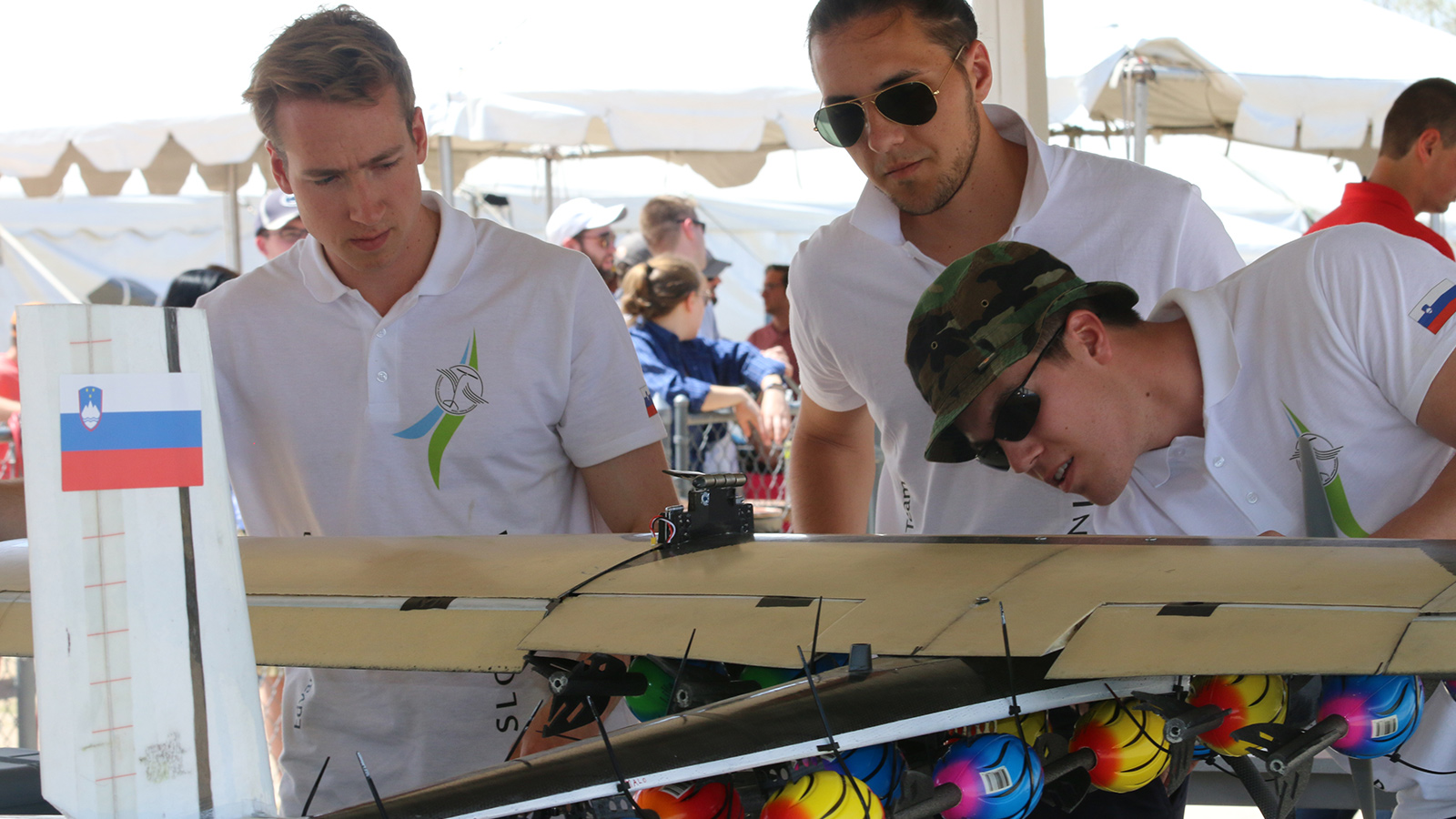Stay Up to Date
Submit your email address to receive the latest industry and Aerospace America news.
Speed and innovative materials were keys to the University of Ljubljana’s victory Sunday at AIAA’s 23rd Design Build Fly competition at TIMPA Airfield, a four-day event that drew the most students in the competition’s history. The first-place finish earned them a $2,500 prize.
Georgia Tech won the $1,500 second-place prize, and Austria’s F.H. Joanneum of Applied Sciences won $1,000 for finishing third. The University of Southern California won the “best report” award.
The Edward Rusjan Team from the University of Ljubljana in Slovenia made their remotely controlled plane out of carbon fiber composites to keep the weight down. The 2.5-meter-wingspan craft came in at 9 kilograms.
The Ljubljana team chose cutting-edge materials for a broader reason too. Companies are “all using composites in aviation and other things and so are we,” said Timotej Hofbauer, a member of the 18-student team. “We’re following the steps and trying to evolve, push it even more, and we think this is the right way,” he added.
The Ljubljana team took an early lead at the end of Friday’s flights at TIMPA, the Tucson International Modelplex Park Association Airfield. “The goal was to be fast,” Hofbauer said, and that gave the team a strong start.
This year’s contestants had to complete a written report, a ground mission and three flights. The first flight required completing a mission of three laps around the course with no added weight. The second mission required flying the same distance with a circular, rotating radome as the payload. For the third mission, teams competed to drop the most plastic darts within 10 minutes, a drill designed to simulate the release of bombs called attack stores. The ground mission required demonstrating installation of the radome and attack stores and activating both remotely.
The Ljubljana team dropped 18 stores, the most of any aircraft. The university has participated in DBF since 2008. Its teams last won the competition in 2015 and placed third in 2017.
“Each year we’re trying to push our limits and try something new, and I think this year we made a big step forward,” Hofbauer said.
With 785 students participating on 77 teams, this year’s event was the largest DBF to date. Twenty-one teams came from outside the United States.
Over the weekend, teams and their aircrafts were tested to the max. The team from Trine University in Indiana had to drive overnight from Colorado after their flight to Phoenix was canceled Wednesday night.
After arriving, they still had to contend with a requirement levied by their professors that they assemble the plane entirely on Thursday to help them when the time came to make repairs.
“When we got here and crashed out, we were able to build a whole new plane and get out on the flight line the same day,” said team member Jasper Bossett.
After struggling to get off the ramp, Trine completed the ground mission but struggled in the air. The plane crashed during flight missions one and two.
Bossett said the team learned a lot, even though it did not win or place.
He offered advice for future competitors: “Definitely don’t overlook anything because there’s so many detailed parts.”
Even before the competition was over, some teams were already planning for next year. After experiencing issues setting up test flights before the competition, the team from the University of New South Wales in Australia decided to stay on the sidelines and observe.
Team adviser Sonya Brown said even without actively competing, the team members benefited from seeing the “real range of skills” on display at DBF.
“I really see it as a well-rounded project where they pick up technical skills and those teamwork soft skills that really help them become great engineers,” she said.
New South Wales team member Alex Hirsch said the lessons learned this year will help them make “an even better plane” for next year’s competition.
“We’re planning a far more structured approach to the design, getting quite a few more members involved and first and foremost a plane to bring,” he said.
About cat hofacker
As acting editor-in-chief, Cat guides our coverage, keeps production of the print magazine on schedule and edits all articles. She became associate editor in 2021 after two years as our staff reporter. Cat joined us in 2019 after covering the 2018 congressional midterm elections as an intern for USA Today.
Related Posts
Stay Up to Date
Submit your email address to receive the latest industry and Aerospace America news.




